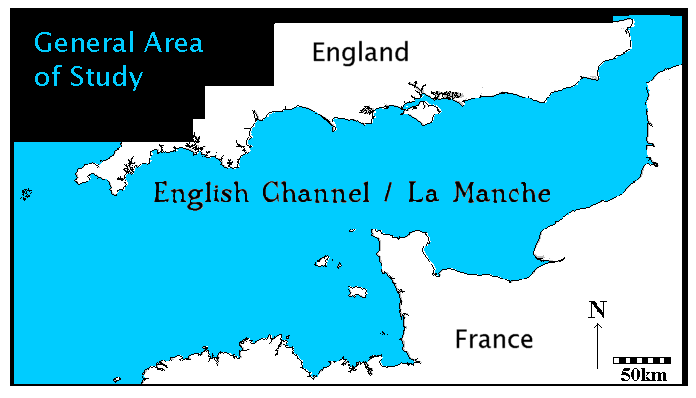|
|
|
|
AIM OF THE EARLY HISTORY OF THE ENGLISH CHANNEL PROJECT
The aim of the project is to examine the human and social impact of the formation and subsequent evolution of the English Channel with reference to the use and exploitation of all environments in, on, under, and around it. This will also involve the detailed examination of a representative study area and the development of perspectives and methodologies for more extensive application in due course.
METHODOLOGYThe work is being carried out in a number of stages:
1 Development of a general GIS-based terrain model for the English Channel and its immediate borderlands, with a more detailed model for the study area
2 Zonation of the study area into topo-environmental blocks with differing archaeological potential and constraints
3 Creation of a multi-media database of archaeological events and discoveries in the study area, linked to the GIS model
4 Checking and validation of database
5 Generation of period-specific summary maps of recorded archaeology in relation to the changing developing Channel, 12000 BC to AD 1500.
The general model of the English Channel will include the English and French coasts between approximately 1°30' east and 2° west.

In addition, a suite of key sites will be compiled for more detailed research and study. The first of these has been identified as Poole Harbour in Dorset, UK. A program of desk-based research and fieldwork for the summer of 2000 is currently being prepared.
| ] Introduction | ] Phase Two: Database | ] Bibliographies |
| ] Background | ] Project Personnel | |
| ] Phase One: GIS | ] Opportunities to get Involved |
Comments and enquires should be addressed to Dave Parham
Early History of the English Channel Project
School of Conservation Sciences, Bournemouth University, Talbot Campus, Poole, Dorset, BH12 5BB, UK
This page was compiled by Eileen Wilkes and is maintained by Dave Parham, School of Conservation Sciences, Bournemouth University. Last Updated February 2003
All images are copyright Bournemouth University unless otherwise stated.